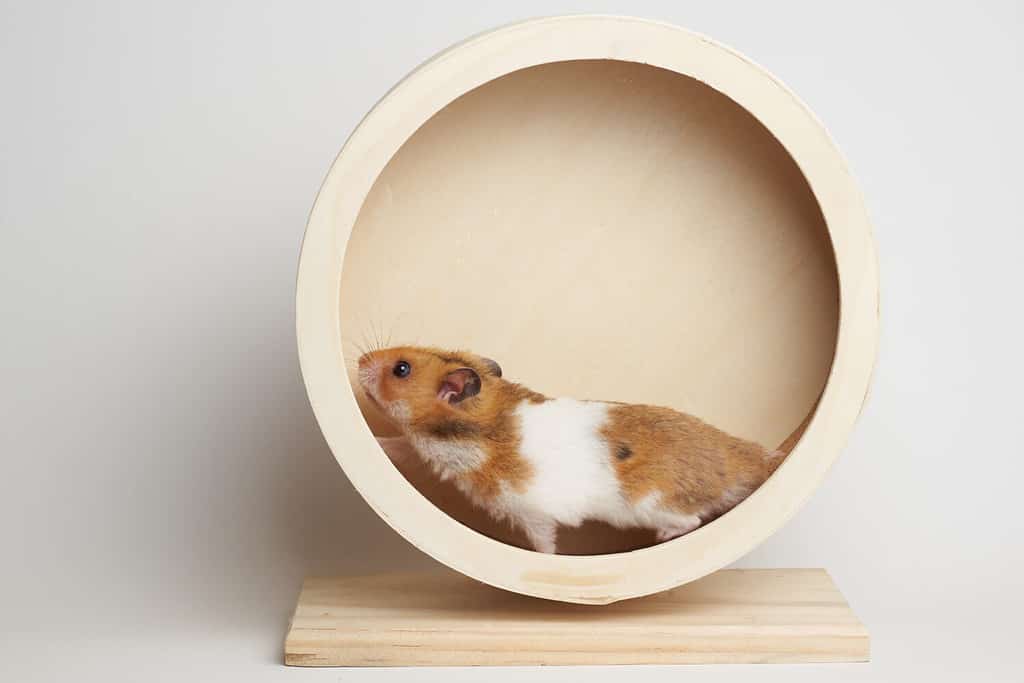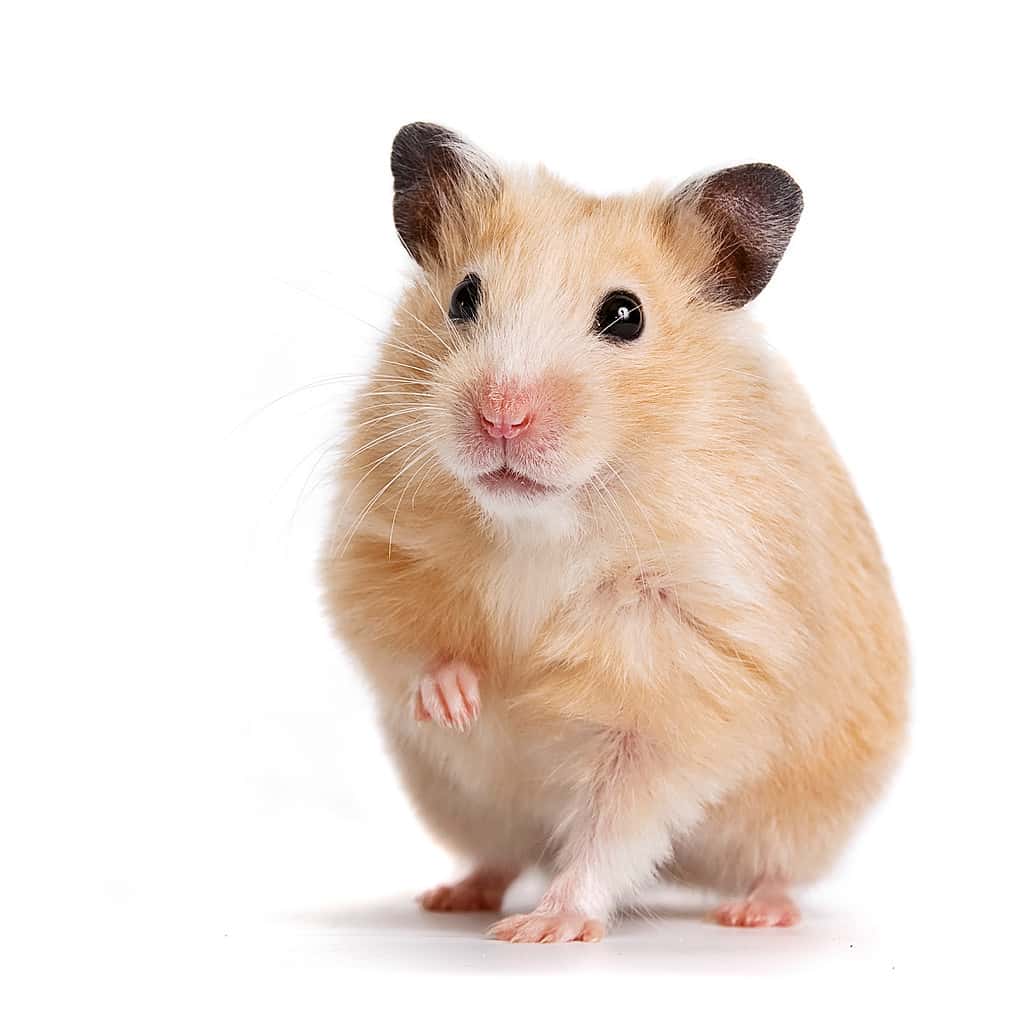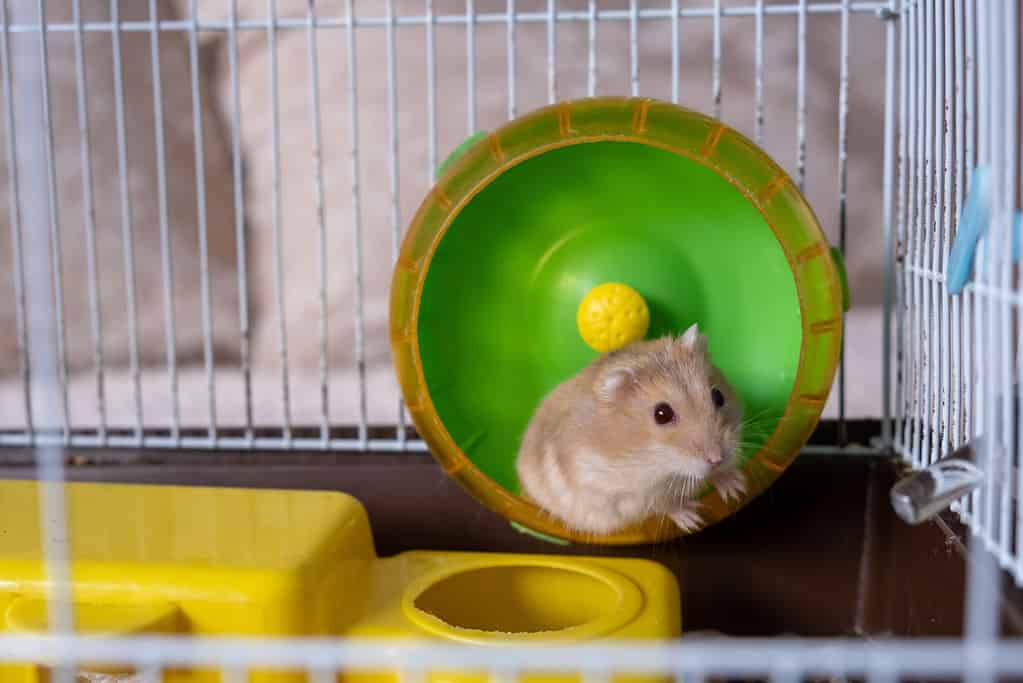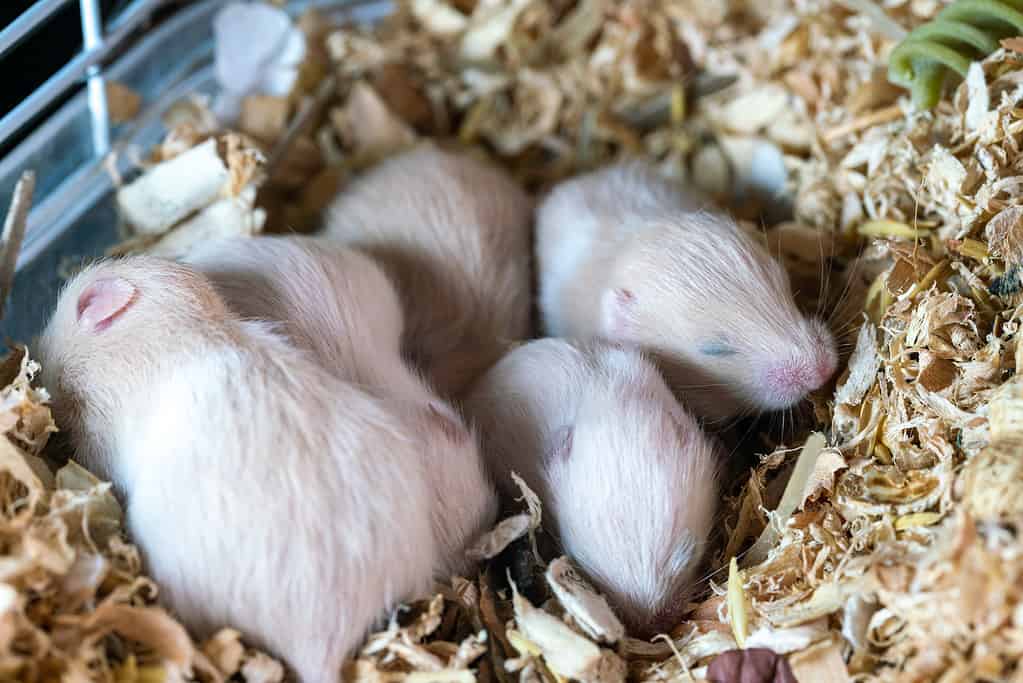Beware the following pitfalls that come with owning a hamster. Even though hamsters can be cute and entertaining pets, we are exploring some pitfalls, and some challenge remedies today. There are over 20 species of hamsters and only 5 species are domesticated. Domesticated hamsters include the Syrian or Golden Hamster (teddy bear hamsters are also Syrian) and 4 species of dwarf hamsters. Syrian hamsters are the solitary types. The four species of domesticated dwarf hamsters include Campbell’s Russian Hamster, Winter White Hamster, Roborovskii’s Hamster, and the Chinese Hamster. Make sure you are ready for the challenges ahead before deciding to get yourself a new furry friend. Having a hamster is a glorious adventure in its own right, and they are fun to observe.
1. Age Factor

Supervise a young child when handling a pet hamster.
©iStock.com/hxyume
The age factor of the owner. How old is the actual hamster owner and caretaker? Take serious consideration of a younger child with hamster responsibilities. Young owners can learn how to take care of the hamster under the supervision of an adult if under 8 years old. Hamsters can make very sweet pets, but be conscious of who is working with the hamster daily. Hamsters can be very quick and are fragile if they fall.
2. Biting
Hamsters can and will bite if necessary. The initial reaction to surprise is biting as well. There is an obvious difference between a light nibble and a strong bite. A hamster will develop a learned behavior if mishandled repeatedly. A hamster’s trust may need to be re-established after triggering a strong bite response. A hamster needs several days to get accustomed to a new home. Hamsters are food driven and a hamster diet-approved treat is appreciated. They do have long incisor teeth. A hamster’s teeth keep growing naturally non-stop after birth and they need to chew (i.e. wood blocks you can get at the pet store). Teeth are a hamster’s weapon when they feel threatened.
3. Not Cuddly Pets
If you are looking solely for a cuddly pet, hamsters are not the number one choice. Hamsters will let you know when they are done playing and go about their own business. You will see how fast hamsters can go if they are out in an open space. Let them safely stretch their paws in a portable play yard or kiddie pool for free time. Did you know that hamsters can run up to 8 miles per hour? As they get to know the owner, cuddlier tendencies are a possibility. Try tempting them with treats and talk calmly so they recognize your voice. Before you know it, they come out with curiosity and look for treats as well.
4. The Encloser (Cage) and Accessory Challenges

An image of a hamster running in a wooden exercise wheel is just one of the many cage accessory options.
©Johannes Menge/Shutterstock.com
One of the pitfalls of owning a hamster to note is identifying the right home (enclosure) and accessories for the hamster. Hamsters are heavy chewers and climbers. New hamster owners tend to get nervous if a hamster is chewing on the bars on its enclosure. Relax, it is out of boredom. There are multiple types of hamster enclosures available. As a proud owner of a new hamster, how do you know which enclosure is right? Sometimes hamsters like to eat out of the plastic enclosures and chewing can be a second sport for young hamsters. Options to think about all around include a combination of metal and plastic, a fish tank with a topper, wood, and chew-proof cages (usually metal). Multi-level cages allow your hamster to climb and make the most of the enclosure space. While identifying the right enclosure is a hard task, enjoying a hamster’s antics is the reward for both of you! Do you know the 14 things hamsters love the most? A friendship will form with some of these incorporations.
5. Escape Artists

Cute hamsters can become escape artists if an enclosure is left open.
©iStock.com/Azaliya
One of the big pitfalls of hamster ownership is that they like to escape. Hamsters are generally curious and also very intelligent. Always properly secure a hamster’s enclosure. The exploratory nature makes hamsters challenging and interesting pets to own. If there is an escape check your pockets in the closet and leave food out, it may be the only chance you have of finding them.
6. Sensory-Challenged
Hamsters are sensory-challenged animals. Not only are they nearsighted and colorblind, but they mainly scent and hear the world. Did you know a friendship is in the works if you simply hold your hand in the hamster’s cage so they can scent you at first? Hamsters only see up to 4-6 inches from their nose and are eye-challenged. Graced with this also comes bad depth perception. Tabletop mishaps can result in a fall, causing internal injuries for the hammy. Do not put a hamster in a “hamster ball” for entertainment as it can’t see where it’s going. Did you know hamsters could also go blind?
7. Nocturnal Creatures
Hamsters are nocturnal creatures, and most active in the nighttime. It is a pitfall of owning a hamster that interaction with the hamster in an active state is usually for a small window of time per day. Make sure to have a hamster wheel for your four-footed furry friend to exercise. Did you know hamsters could run up to 5 miles a night in a wheel? A wheel is beneficial for a hamster’s physical and mental well-being. The constant sound of the wheel may be a noisy experience for the human, and you may want to think about putting the hamster in a different room from where you sleep. Be conscious of what size the wheel is. Using a wheel that is too small can cause the hamster to develop spinal issues.

A Djungarian hamster runs in a size-appropriate wheel for exercise.
©iStock.com/ANATOLii SAVITSKii
8. Solitary Creatures
Pre-plan the living and home location space of the hamster before you get it. Hamsters are solitary creatures. Syrian hamsters require their enclosure, but some types of dwarf hamsters can be homed together in the same enclosure. Make sure if putting dwarf hamsters together that there is more than one spot to hide in if they need to separate.
9. Sexing Whether a Hamster is Male or Female

A litter of tiny hamster pups that have not opened their eyes yet.
©iStock.com/jxfzsy
It can be hard to tell immediately whether a hamster is male or female. Female hamsters also reach sexual maturity at 4-6 weeks. Did you know that a pregnant female hamster can usually birth to 4-6 pups per litter (up to a litter of 12 pups) with a gestation period of 16-22 days? Leave a litter of pups to mommy until she is done weaning them the first 7-14 days after birth. Resist and resist handling them during the weaning period. Keep boys and girls separated after being weaned to avoid any other unwanted litter complications.
10. Short Life Span
Hamsters have a short life span. They are high-energy animals, but the short life span of hamsters is a major pitfall. Hamsters sold in pet stores are usually 4-8 weeks of age. Dwarf hamsters generally live between 1- 2 years, and larger Syrian hamsters 2-3 years. Hamsters have been known to live up to 3-4 years in captivity. According to the Guinness Book of World Records, the oldest hamster lived in the UK and made it to a stunning 4.5 years in captivity.
11. Clean but Stinky?
New hamster owners will sometimes ask how to bathe their hamsters because they “smell” even though hamsters themselves are not naturally stinky. Hamsters always clean themselves and the stink comes from urine in their cage. Do weekly general cage maintenance, and a once a month paper change to alleviate any stink factor. Do not use water or soap on a hamster! Wet on a hamster’s coat removes some of the protective oils. A sand bath is a hamster treat. Take clean children’s play sand in an oven dish and heat at 350 degrees for 25-30 minutes to sanitize. Make sure to let cool before using it with your hammy and save the rest in a bag for next time.
Happy adventures with your potential fuzzy 4-footed friend should you choose to get one (or more)! Your time with the hammy will be enjoyable, unforgettable, and educational.
The photo featured at the top of this post is © iStock.com/Yuliya Taba
Thank you for reading! Have some feedback for us? Contact the AZ Animals editorial team.







